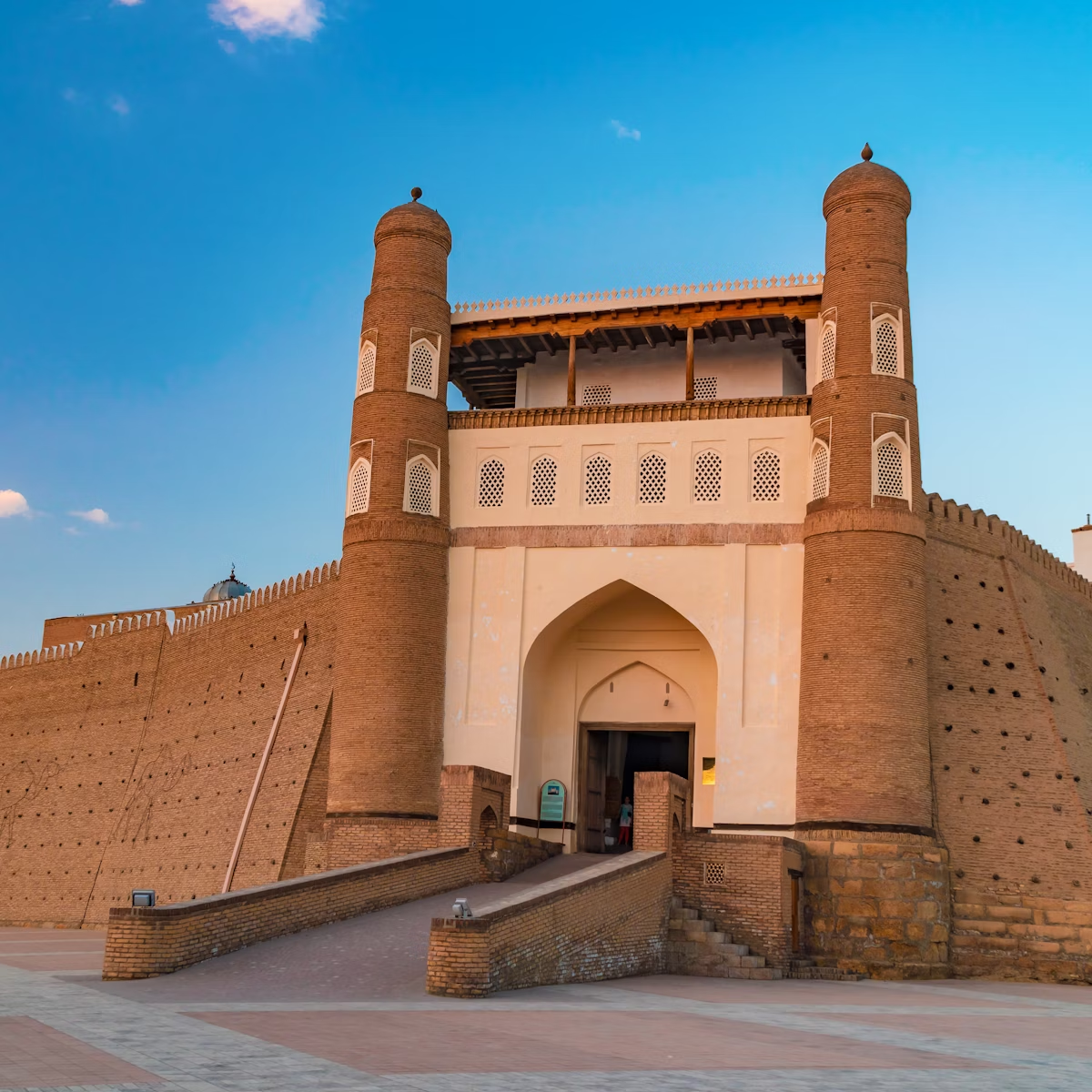When it was built by the Karakhanid ruler Arslan Khan in 1127, the Kalon Minaret was probably the tallest building in Central Asia – kalon means ‘great’ in Tajik. It’s an incredible piece of work, 47m tall with 10m-deep foundations (including reeds stacked underneath in an early form of earthquake-proofing), and has stood for almost nine centuries. Chinggis (Genghis) Khan was so dumbfounded by it that he ordered it spared while his troops ransacked the rest of the city.
The minaret is an architectural masterpiece. Its 14 ornamental bands, all different, include the first use of the glazed blue tiles that were to saturate Central Asia under the Timurids. Up and down the southern and eastern sides are faintly lighter patches, marking the restoration of damage caused by Soviet general Frunze’s artillery in 1920. Its 105 inner stairs, accessible from the Kalon Mosque, have been closed off to tourists for several years but may reopen.






